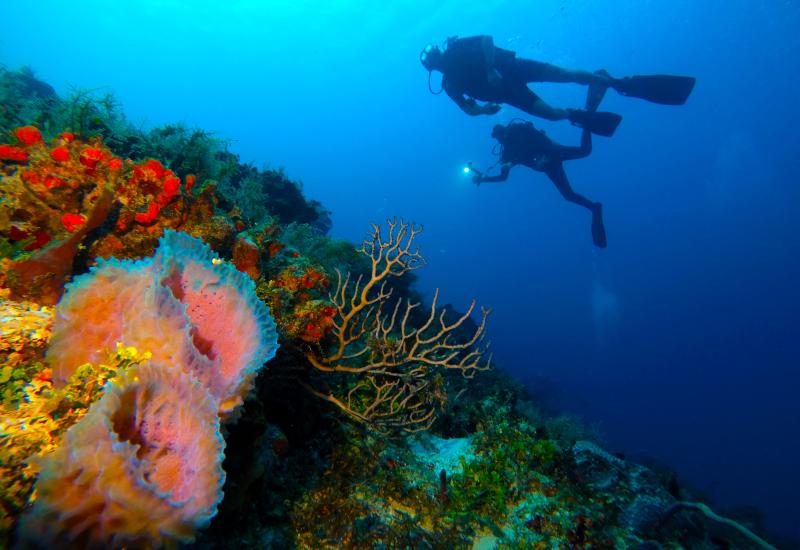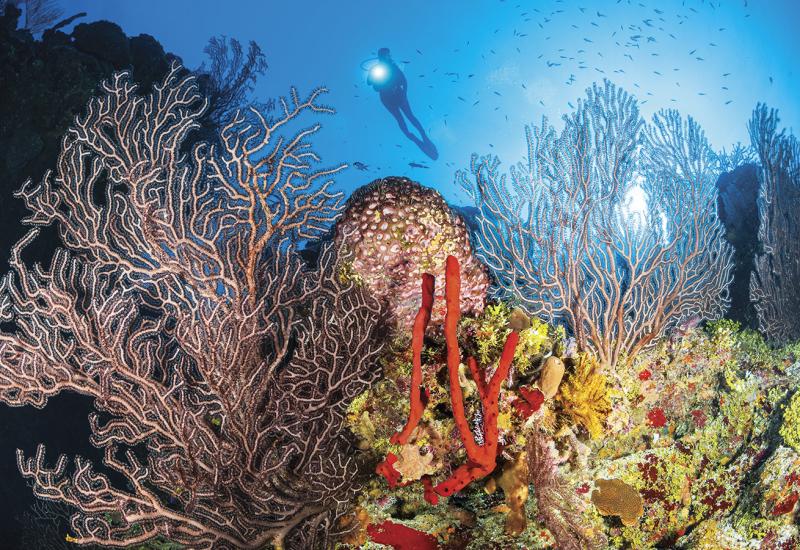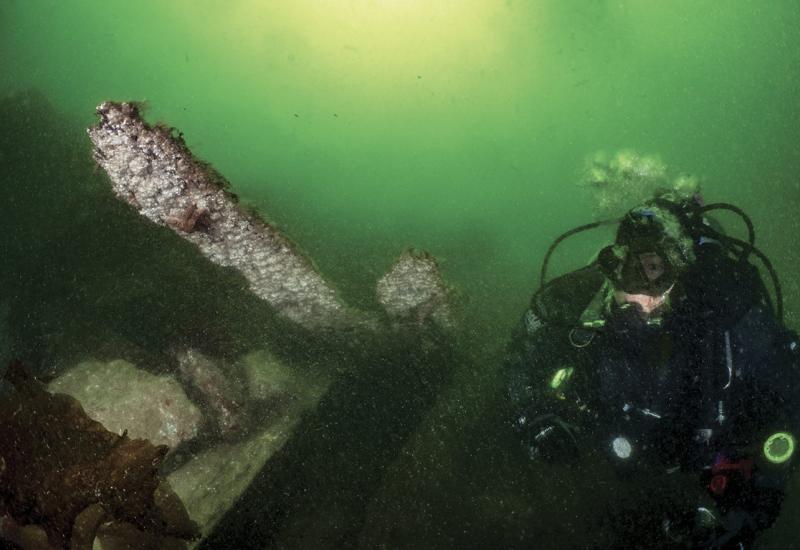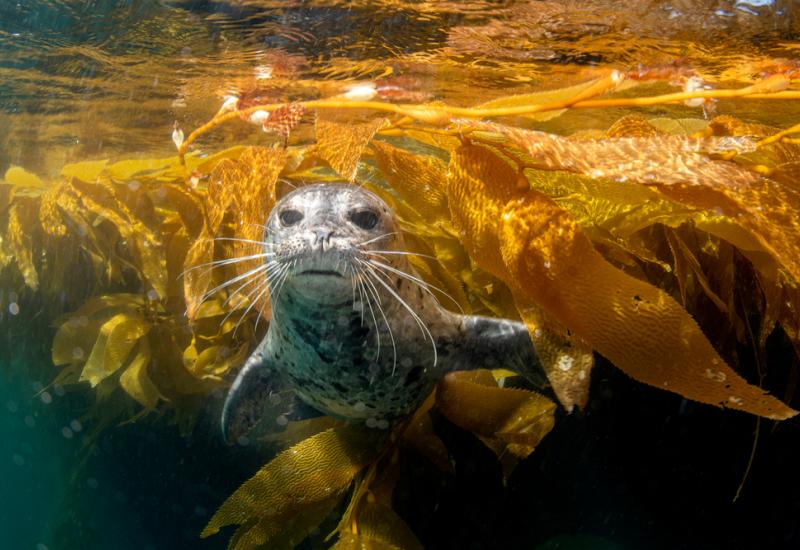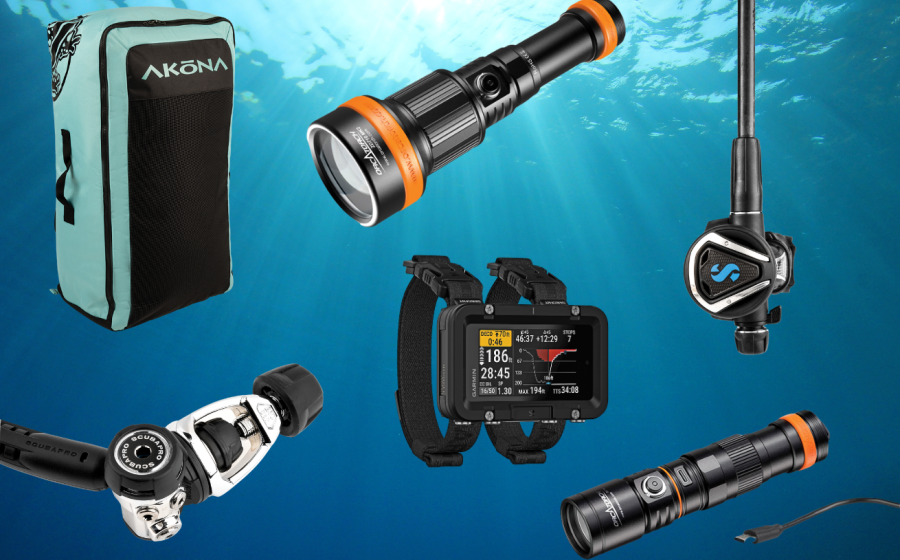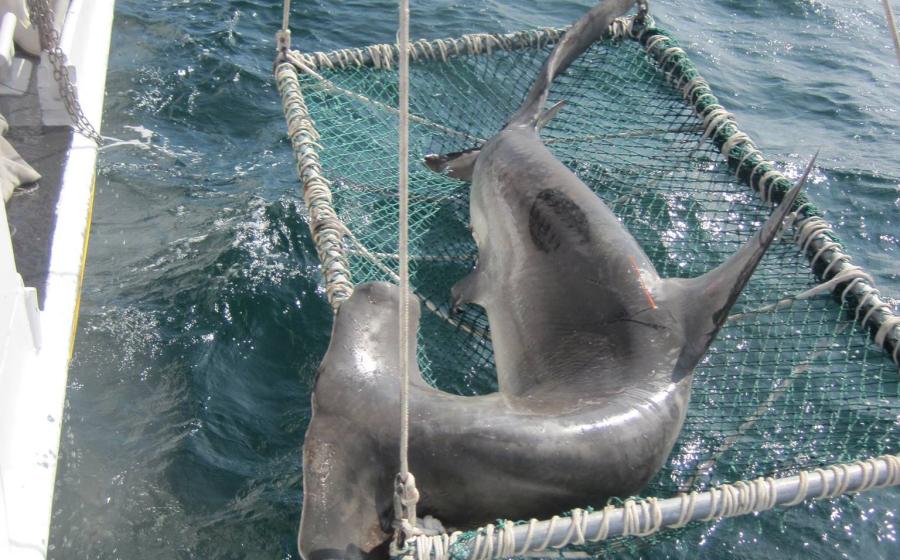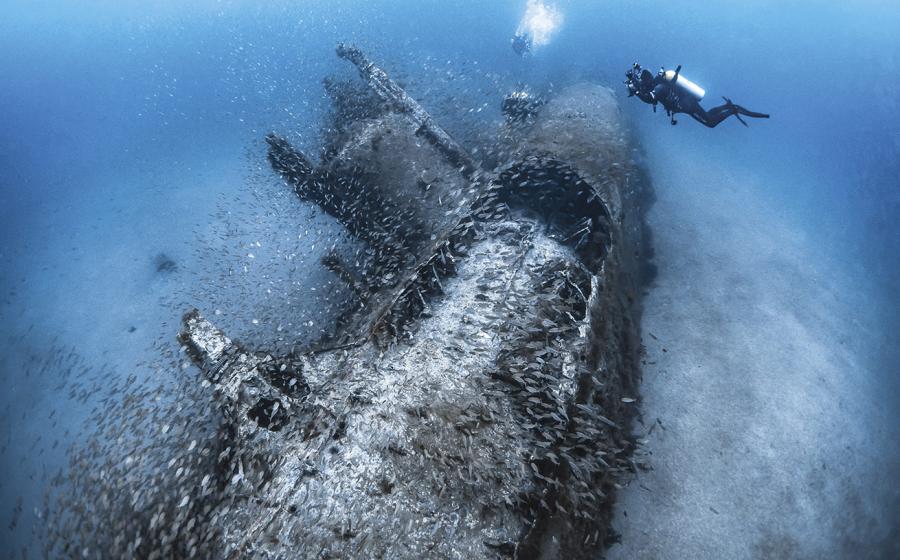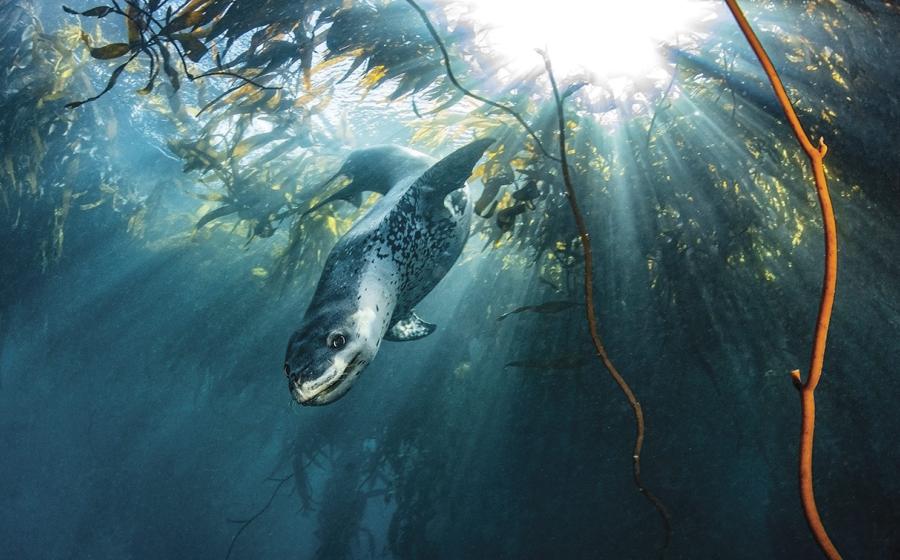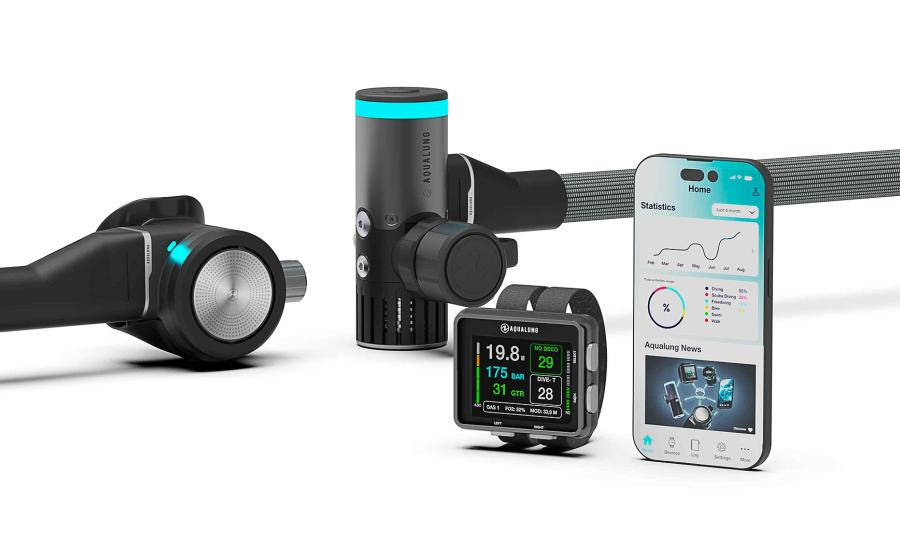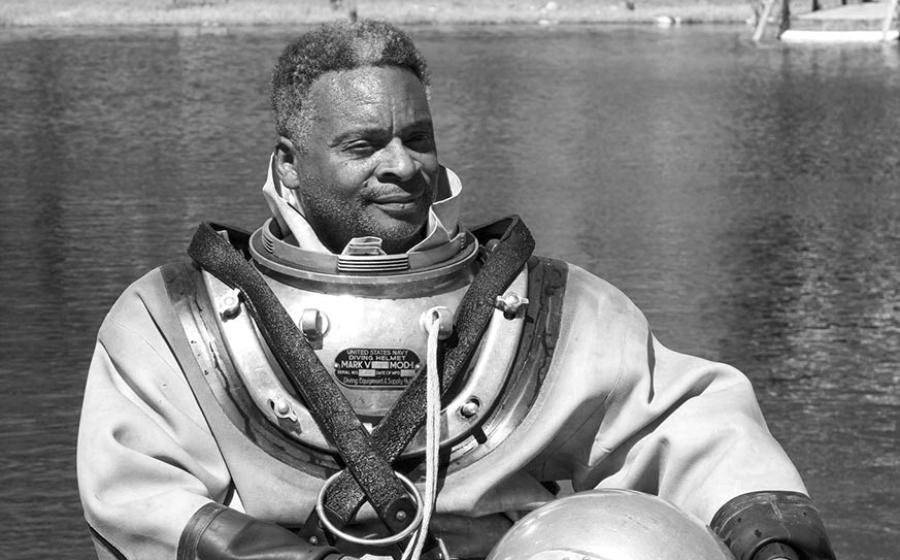Going With the Flow in B.C.
The dive sounded tempting -- and possibly dangerous. Guinness calls it the fastest navigable tidal current in the world, Mike Lever said over the phone. Curiosity overcame caution, and a few months later I found myself off British Columbia's Vancouver Island in the salon of Lever's live-aboard boat, the Nautilus VII, getting to know my fellow passengers -- or at least their dive prowess. We were heading north along Vancouver Island, aiming for an area on the mainland called Nakwakto opposite the northern tip of the island. The British Columbia coast is sliced with long, narrow fingers of water called inlets, many of them 50 miles long and hardly a quarter-mile wide. Nakwakto is near the head of one such inlet named Seymour. Tides here vary sometimes by 19 feet, meaning a chunk of water 19 feet high and, in the case of Seymour, 43 miles long drains through a pass so narrow you could hit a baseball across it. Currents have been recorded at 22 knots. When water rushes between the occasional set of islands here, it actually becomes a waterfall. Yes, indeed, this was going to be interesting. But first, we had to get to Nakwakto, and that meant motoring up the 240-mile length of Vancouver Island. To break things up, we planned to dive our way along the coastline. Our first dive was halfway up the island at April Point Wall off Campbell River. The current here is 13 knots. Think of this as a training run, Mike said at our dive briefing. Mike gave us a refresher on diving with currents: Don't fight it. Most currents you'll hit on slack are highly localized back eddies. Let yourself go with the flow. Odds are you'll go 50 or 100 feet, hit another current and get blown the other way.Don't forget the downwellings and upwellings. Again, they tend to be highly localized. Whatever you do, he added, don't hit your BC inflator. If you push your way horizontally maybe 30 feet, you'll probably come out of it, at which point you don't want to rocket to the surface with an overinflated BC. Finally, there was the matter of moving on the surface.Lie on your back and lock your knees and fin with straight legs. No bicycle peddling, Mike said. At Nakwakto, you'll have to be able to go at least 50 feet against current. And heads up around the skiff. Make eye contact with the crew so you know they've spotted you. So we powdered and jellied our way into our drysuits and hit the water. Fifty-one degrees. We sank to 80 feet and immediately found what makes this area famous. Strawberry anemones stretched in a pulsing, neon-pink blanket as far as we could see. It was broken only by the occasional stalk of white plumose. Our next dive, Row and Be Damned, was more vertical wall with more strawberries. But at 80 feet, Al's light went crazy. Even close up, peering from a distance of hardly 3 feet, it was almost impossible to tell what we were looking at - until the beige, bulbous wall moved. A half-dozen sets of antennas waved. It was a jumble of huge king crabs. I had counted up to eight when the outcrop of rock I was using to steady myself moved. I was holding onto a crab, with another one at my knee. By the time we were done counting feelers and dividing by two, we came up with 11 crabs in a crack maybe 4 feet long. They were crammed inside, piled atop one another like so many marbles. The next day we hit Hussar Point along the fabled Browning Wall. Browning is one of those spots Jacques Cousteau drooled over. It's considered the best diving in this area and, despite 47-degree water and 30-foot visibility, it didn't disappoint us. The living carpet started virtually at the surface ... hairy, waving and white as far as the eye could see. Plumose and encrusting sponges spread unbroken, and every inch sprouted tiny tentacles that fed in the green, gritty soup that surrounded us. In the shallows, the carpet was cut by tangled balls of yellow and purple basket stars, 20-armed sun stars, red urchins and nudibranch eggs like strings of pearls. It was all woven into an incredibly intricate living tapestry. At depth, it looked like a New England twilight in a blizzard, a kind of filmy gray-white that required 30-watt lights to pierce. I've seen night dives in the Caribbean that were brighter than this dive at high noon in Canada. At 70 feet, a basketball-size octopus splayed out across a rock, flowing gracefully in several directions at once and blinking at us with its slit-shaped eyes. In another crevice, a baby wolf eel peered out, looking like the world's ugliest Cabbage Patch Doll. The farther north we traveled, the nastier the weather got. There's a climate line halfway up Vancouver Island that seems to divide the more temperate south from its sometimes evil northern twin. We dithered about while a 60-knot gale played tag, then we made a dash for the protected waters of Seymour Inlet. The skiff glided along deceptively flat, oily water. It looked like that glassy bulge that builds up at the head of a waterfall just before the bottom drops out. And between two close-set islands, the bottom did drop out. Here, in the middle of a coastal inlet, was a full-fledged, 10-foot-high waterfall. This was our welcome to Nakwakto. Later, at the briefing, Mike drew a diagram on the board of Tremble Island surrounded by a bewildering hatchwork of lines representing the currents. There was the main flow going north to south, the back eddies going in the opposite direction and more back eddies to that. The dive was to be timed to the second, and here, as nowhere else, we had to keep the schedule tight. So tight, Mike called out dive time limits to each departing wave of divers. Twenty-four minutes for the first group, then 22, then 20 for the last people off the boat. The plan was to make our way down the topography to 60 or 70 feet, then work our way around the island, hopefully emerging just offshore on the opposite side. It was important - vitally important - that we keep close to the bottom. Needless to say, our first attempt at Nakwakto was strictly Keystone Kops. Those hapless folk who rose even 5 feet off the topography (yours truly included) were swept out into the channel just as a tug came by, dragging several tons of scrap wood.The next day went far better. As before, we tied up to a branch hanging from a tree on Tremble Island. Everyone rolled in and finned back to the shore rocks, then sank into the kelp and made their way down the island's slope. Kelp gave way to hairy rock that soon became covered with feather-duster tube worms. But these weren't your usual delicate, wispy things. They were compact pompoms colored a rich, blood-red cranberry and striped with shining teal.What makes this spot famous, however, is the gooseneck barnacles. Most goosenecks are muddy brown and grow in tidal flats. Here, they go down to 50 feet and more. The barnacles grew in clumps, some fist-size; others as big as basketballs. Each barnacle stood 3 inches tall, a mosaic of fluorescent copper framing plates of mother-of-pearl. This is the only place Mike knows of where the goosenecks come in this particular set of intense colors. The barnacle clumps got larger, until they joined into entire ridges of the stuff. Then even the ridges joined, and the bed of iridescent barnacles stretched as far as we could see. Because of time and distance constraints, we had to keep moving. But in those few moments we stopped, we could see that the bottom was entirely covered with life. Lines of feather dusters wove between the barnacles and the few open spots were speckled with anemones, sponges, chitons and little white sea stars. All the while, we gradually edged up. The goosenecks stayed surprisingly thick, even in the kelp, and at the very end, in maybe 15 feet of water, we spotted one last treat: a 2-foot clump of large mussels colored a glowing cobalt with pearl-lined lips. OK, Mike said as we climbed aboard, Who's up for a snorkel? We dropped our tanks, weights and lights and jumped back in. The idea was to form a long line, each person holding the fin of the person ahead of him and then sweep through a narrow passage between two islands. Slowly at first, and then with increasing speed, we got sucked toward what Mike calls The Flush: a passage half the width of our skiff. Above water, the barnacle-covered rocks swept by with alarming speed. Below, we flew over rocks and kelp. Three knots looks like Warp 9 from a water view. We shot through the other side, whooping and yelling, and then we climbed aboard and went through again. To kill time between dives, we went for a short hike. Our aim was to find a trail built by the owner of the nearby Seymour Inlet Lodge. The lodge is a story by itself, a collection of cedar cabins floating on a log platform that serves as a scuba lodge.That night, yet another front pushed through with 60-knot winds raging outside the inlet. It was downright spooky to sit there staring up at 100-foot cedars, watching their top 10 feet lean sideways in the wind. The water in the cove was glass-smooth, but outside it was like someone was shooting a fire hose sideways. The glassy surface ended in a smoky wall that was so turbulent, you couldn't even make out the 10-foot whitecaps. Inside our cove, waves of fine rain softened the landscape, graying trees, sky and water into monotone. Two eagles skimmed the water, and thick-billed murres dived for sea bass. A couple of days later, when the dive du jour could only muster 3 knots, it seemed tame. Nakwakto had, indeed, set the bar.

